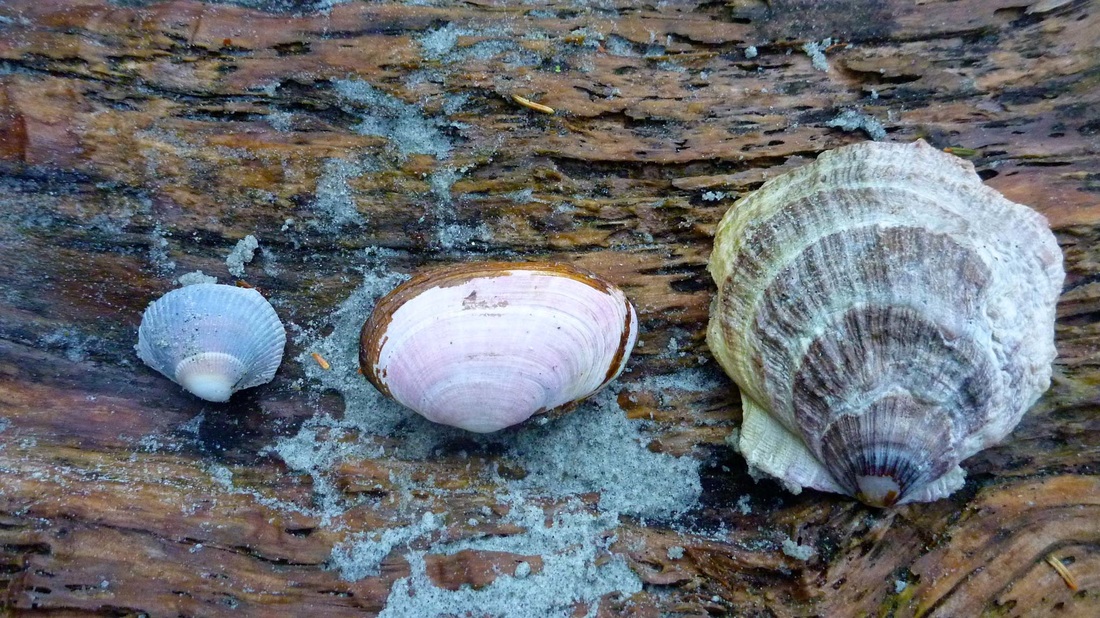California sunsetclam, sunset clam • Gari californica

California sunset clam at centre, beside a cockle (left) and a giant rock scallop (Crassodoma gigantea). Photo by Angeleen Olson.
Identification
The California sunsetclam has an elongated oval shell with a smooth texture and rounded ends. The shell is usually yellowish white with light pink rays radiating from the hinge, creating a sunset-like impression. The periostracum, which is usually present at the edges, is thin and brown. This is a relatively large clam, reaching 15 cm across.
Habitat & Range
It is more common to find the empty shell valves than the live animal. This species buries itself 5-20 cm deep in gravel, in the intertidal and subtidal to depths of 170 m. Its range extends from the northern Gulf of Alaska to northern Mexico.
Similar Species
The rose-painted clam (Semele rubropicta) also has pinkish sunset-like rays decorating its shell. It is much smaller (to 5 cm across), and is not as elongated as the California sunsetclam.
The California sunsetclam has an elongated oval shell with a smooth texture and rounded ends. The shell is usually yellowish white with light pink rays radiating from the hinge, creating a sunset-like impression. The periostracum, which is usually present at the edges, is thin and brown. This is a relatively large clam, reaching 15 cm across.
Habitat & Range
It is more common to find the empty shell valves than the live animal. This species buries itself 5-20 cm deep in gravel, in the intertidal and subtidal to depths of 170 m. Its range extends from the northern Gulf of Alaska to northern Mexico.
Similar Species
The rose-painted clam (Semele rubropicta) also has pinkish sunset-like rays decorating its shell. It is much smaller (to 5 cm across), and is not as elongated as the California sunsetclam.
References
Harbo, R. M. (1997) Shells & Shellfish of the Pacific Northwest. Madeira Park, BC: Harbour Publishing. Pp. 161-162.
Lamb, A., and Hanby, B. (2005). Marine Life of the Pacific Northwest [electronic version]. Madeira Park, BC: Harbour Publishing.
Authors and editors of page
Kelly Fretwell (2016).
Harbo, R. M. (1997) Shells & Shellfish of the Pacific Northwest. Madeira Park, BC: Harbour Publishing. Pp. 161-162.
Lamb, A., and Hanby, B. (2005). Marine Life of the Pacific Northwest [electronic version]. Madeira Park, BC: Harbour Publishing.
Authors and editors of page
Kelly Fretwell (2016).



